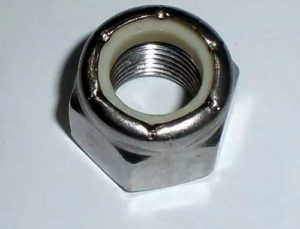Bolt connection anti-loosening method summary

1.Double nut
Double nut anti-loosening is also called top nut anti-loosening. When two top nuts are tightened, there is always the pressure of interaction between the two top nuts, and any rotation of either nut should overcome the friction between the screw threads. The pressure between the top nut always exists even when the external load changes, so it has the function of relaxation.
2.Self-locking nut
The self-locking nut is generally frictional. The principle is that the embossing tooth is pressed into the preset hole of the sheet metal. Generally, the diameter of the pre-positioning hole is slightly smaller than that of the rivet nut. The nut is connected to the locking mechanism, and when the nut is tightened, the locking mechanism locks the bolt thread.
3.Thread-locking Adhesives
Thread-locking Adhesives is composed of (meth) acrylate, initiator, co-promoter, stabilizer (polymerization inhibitor), dye and filler in a certain proportion.
4. Cotter pin
After the nut is tightened, insert the split pin into the groove of the nut and the tail hole of the bolt, and open the tail of the split pin to prevent the relative rotation of the nut and bolt.
5. Slotted Nut
The slotted nut and screw bolt with the hole is used with the split pin to prevent the bolt and the nut from rotating relative to each other.
6. Series steel wire anti-loose
The series anti-loose steel wire is inserted into the hole of the bolt head, and the bolts are connected in series to contain each other. This method of relaxation is very reliable, but the disassembly is more troublesome.
7. Preloading
High-strength bolted joints generally do not require additional anti-loosening measures, because high-strength bolts are generally required a relatively large pre-tightening force. Such a large pre-tightening force creates a strong pressure between the nut and the connected piece. This pressure creates a frictional torque that prevents the nut from rotating, so the nut will not come to loose.
8. locked spacer
9. spring washer
10.Double stack self-locking washer

